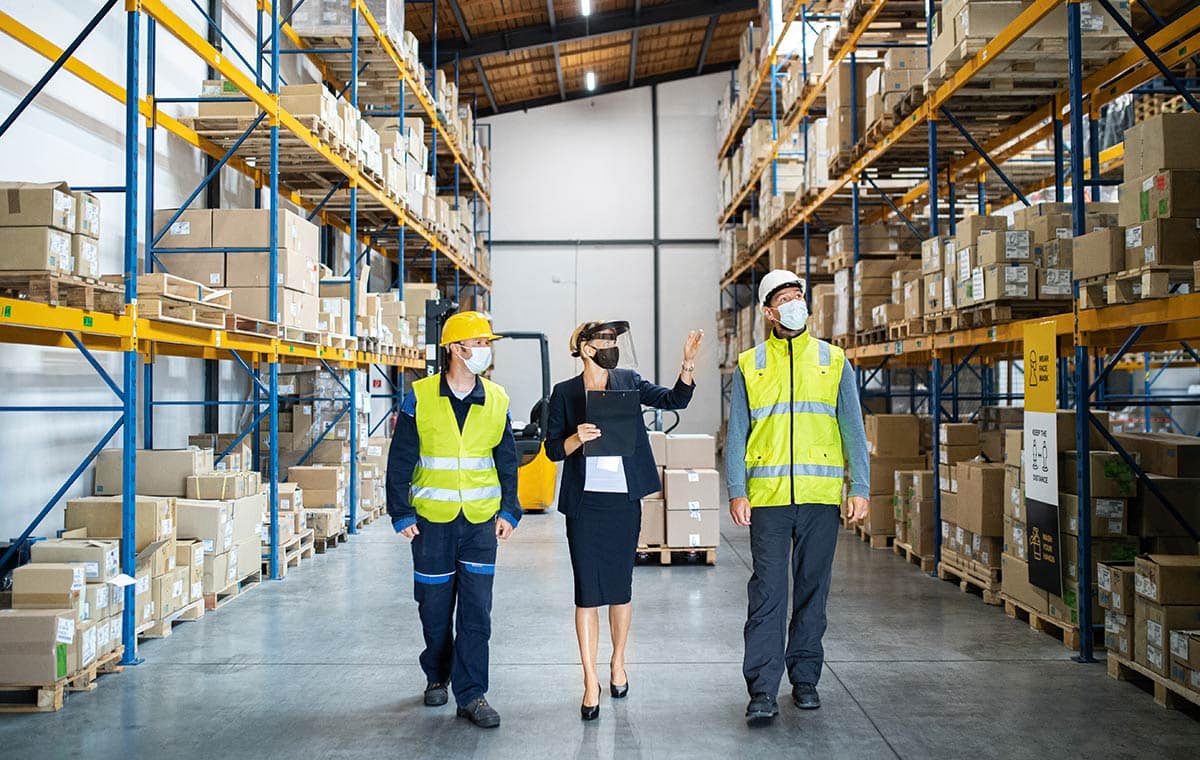Accidents in the workplace can have devastating consequences, both for employees and the organisations they work for. Every year, millions of workplace accidents occur worldwide, resulting in injuries, lost productivity, and even fatalities. To mitigate these risks, leadership plays a pivotal role in accident prevention and control. In this article, we’ll explore the crucial role of leadership in ensuring workplace safety and delve into how team leaders and management can contribute to accident prevention.
The Importance of Workplace Safety
Before we dive into the specifics of leadership’s role in accident prevention, let’s first establish why workplace safety is so vital. Workplace accidents can result in various negative outcomes, including physical injuries, psychological trauma, financial losses, and damage to a company’s reputation. The human and financial toll of accidents underscores the importance of proactive safety measures.
The Role of Leadership in Accident Prevention
Leadership within an organisation is not limited to top executives; it extends to team leaders, supervisors, and managers at all levels. Effective leadership is essential for creating a culture of safety and ensuring that accident prevention measures are implemented successfully. Here’s how leadership contributes to accident prevention:
Setting the Tone for Safety
Leaders, starting from top management down to team leaders, must prioritise safety as a core value. When leaders emphasise the importance of safety in their words and actions, it sends a clear message to employees that safety is non-negotiable. For instance, a CEO who regularly communicates the company’s commitment to safety in company-wide meetings sets the tone for the entire organisation.
Creating and Enforcing Safety Policies
Leadership is responsible for developing and implementing safety policies and procedures. These policies should be comprehensive, clear, and aligned with industry standards and legal requirements. Once established, leaders must ensure that these policies are consistently enforced. Team leaders and supervisors play a critical role in monitoring compliance at the ground level.
Leading by Example
Leaders must lead by example when it comes to safety practices. When employees see their leaders actively following safety guidelines, they are more likely to do the same. For instance, if a team leader consistently wears personal protective equipment (PPE) and adheres to safety protocols, team members are likely to follow suit.
Providing Training and Education
Leadership should invest in ongoing safety training and education for employees. This includes training on how to use safety equipment, emergency procedures, and hazard recognition. Team leaders can facilitate regular safety meetings and workshops to ensure that their teams are well-informed about safety protocols and best practices.
Fostering a Reporting Culture
Accident prevention relies heavily on identifying potential hazards and addressing them before accidents occur. Leaders should encourage a culture of reporting near misses and potential safety hazards. When employees feel comfortable reporting safety concerns without fear of reprisal, leaders can take proactive steps to mitigate risks.
How Can Team Leaders Help Prevent Accidents?
Team leaders are often the closest point of contact with frontline employees, making their role in accident prevention particularly crucial. Here are some ways in which team leaders can actively contribute to workplace safety:
Safety Training and Supervision
Team leaders should ensure that their team members receive thorough safety training when they join the organisation and periodically thereafter. They should also provide ongoing supervision to ensure that safety procedures are followed on a day-to-day basis.
Hazard Identification and Reporting
Team leaders are in an excellent position to identify potential hazards within their work areas. They should actively encourage their team members to report any safety concerns they observe. By promptly addressing these concerns, leaders can prevent accidents from occurring.
Regular Safety Meetings
Conducting regular safety meetings is a practical way for team leaders to keep safety at the forefront of their team’s minds. These meetings can serve as a forum for discussing safety concerns, sharing best practices, and reinforcing the importance of safety.
Setting Clear Expectations
Team leaders should set clear expectations when it comes to safety. This includes specifying safety protocols, PPE requirements, and emergency procedures. When expectations are well-defined, team members are more likely to follow them.
Leading by Example
As mentioned earlier, leading by example is essential. Team leaders should demonstrate a commitment to safety in their own actions and behaviour. This not only sets a positive example but also fosters a culture of safety within the team.
The Role of Management in Accident Prevention and Control
While team leaders have a direct impact on the safety of their teams, upper-level management also plays a critical role in accident prevention and control. Here’s how management contributes to overall workplace safety:
Resource Allocation
Management is responsible for allocating resources to support safety initiatives. This includes budgeting for safety equipment, training programs, and safety personnel. Without adequate resources, accident prevention efforts may fall short.
Policy Development
Management is involved in the development of safety policies and procedures. These policies should be informed by industry best practices, legal requirements, and input from employees. Effective policies provide a framework for creating a safer work environment.
Compliance Monitoring
Management must oversee compliance with safety regulations and policies throughout the organisation. This involves regular audits, inspections, and reporting mechanisms to ensure that safety standards are met consistently.
Incident Investigation
When accidents do occur, management is responsible for conducting thorough investigations. Understanding the root causes of accidents enables management to implement corrective actions to prevent similar incidents in the future.
Performance Metrics
Management should establish key performance indicators (KPIs) related to safety. These metrics can track accident rates, near misses, and compliance with safety procedures. By monitoring these KPIs, management can identify areas that require improvement and allocate resources accordingly.
Communication and Training
Effective communication is essential in promoting safety throughout an organisation. Management should ensure that safety information is disseminated effectively and that employees receive the necessary training to perform their jobs safely.

Making an Accident at Work Claim with National Claims
At National Claims, we understand that accidents at work can have profound effects on individuals and their families. If you’ve been injured in a workplace accident due to negligence or unsafe conditions, you may be entitled to compensation. Our team of experienced solicitors specialises in handling workplace accident claims.
Contact National Claims
The first step in making an accident at work claim with National Claims is to get in touch with us. You can reach us through our website, via phone, or by visiting one of our offices. Our friendly and knowledgeable staff will guide you through the claims process.
Free Initial Consultation
During your initial consultation with National Claims, one of our solicitors will assess the details of your workplace accident. We will gather information about the incident, your injuries, and the circumstances surrounding the accident. This consultation is entirely free, and there is no obligation to proceed with a claim.
Investigating Your Claim
If we believe you have a valid claim, we will begin the process of investigating your case. This may involve collecting evidence, obtaining witness statements, and assessing the extent of your injuries. Our goal is to build a strong case on your behalf.
Conclusion
In conclusion, leadership at all levels plays a crucial role in workplace accident prevention. From setting the tone for safety to providing training, fostering a reporting culture, and leading by example, leaders are instrumental in creating a safe work environment. Additionally, management’s role in resource allocation, policy development, compliance monitoring, incident investigation, performance metrics, and communication is essential for overall safety. By working together, leaders and management can significantly reduce the risk of workplace accidents and ensure the well-being of employees. Remember, safety starts at the top and filters down to every level of the organisation, creating a culture of vigilance and care.
If you have been injured in a workplace accident, National Claims is here to help you navigate the process of making a claim for compensation. Our team of experienced solicitors is dedicated to fighting for your rights and ensuring that you receive the compensation you deserve. Contact us today for a free initial consultation and take the first step toward securing the compensation you need to move forward after an accident at work. Your safety and well-being are our top priorities.
Contact us to get a start on your claim for your accident at work.
Click below to see why we are one of the most trusted claims management companies in the UK.

We’re proud of our excellent customer reviews
We thrive on delivering exceptional service and ensuring our clients’ satisfaction. Don’t just take our word for it. Check out some of our independent reviews to see what our clients have to say.
Excellent

This firm is excellent, they sorted out my car pay out and injury claim very fast, they always communicate with you all the time.

My accident case was dealt with confidence and with great result of the outcome, especially James kept me informed all the time.

I was very impressed at the way my inquiry was treated. I was listened to attentively and everything I needed to know was explained to me.






